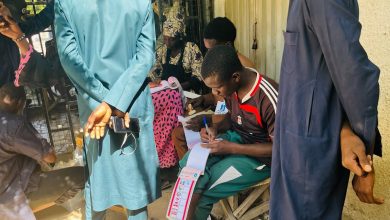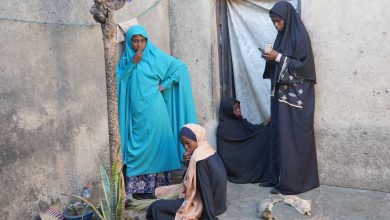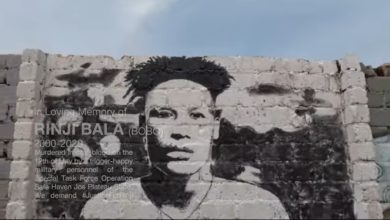The Bloodbath (3): Seven Years On, Wounds From Zaria Massacre Yet To Heal
Many people who survived injuries inflicted during the 2015 mass extrajudicial killing in Kaduna, Northwest Nigeria, are left with physical deformities.
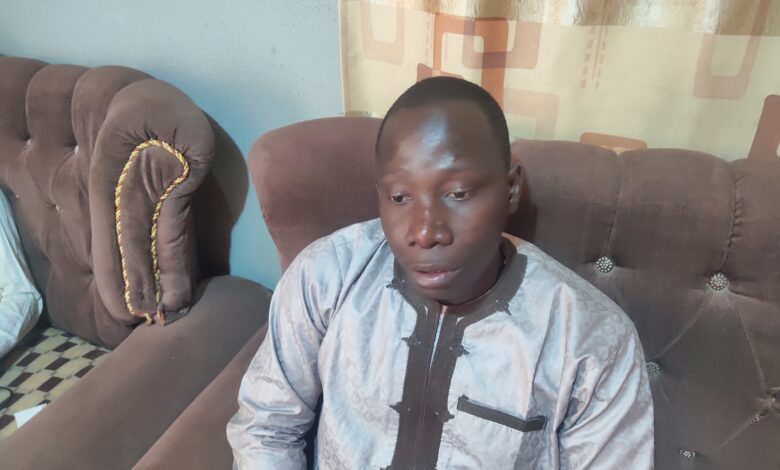
Yusuf Abdulkareem, 28, did not think he would survive after he was shot by soldiers during the Zaria Massacre of Dec. 2015. In fact, his family members were advised to give up and pray that his soul rests in peace.
After three days of searching, he was seen among those dumped by the troops at the Ahmadu Bello University Teaching Hospital (ABUTH), in Kaduna, Northwest Nigeria.
He spent another three days in a coma before he was told how he survived death by family members.
Genesis
On Saturday, Dec. 12, Yusuf got a call from his close friend that the venue where members of the Islamic Movement of Nigeria (IMN) planned to celebrate the birthday anniversary of the Prophet of Islam had been besieged by soldiers.
He swiftly wore his clothes and proceeded to the place to support other members. Yusuf told HumAngle that he met various “soldiers terrifying our people and one could tell that they were there for violence. I saw them shooting at our people sporadically.”
The first victim recognised by Yusuf was Ibrahim, whom he said was his junior colleague in secondary school. While trying to rescue the injured, he saw another close friend lying on the floor and seeking help after sustaining a gunshot wound.
“The soldiers came prepared because they took positions at strategic points. I saw multiple corpses and the medical team of the movement also tried rescuing some people but the soldiers had blocked the entrance/exit of the venue.”

By 5 a.m. on Sunday, over 50 people had reportedly been killed at the venue and also at the residence of Mallam Ibrahim El-Zakzaky, leader of the religious group.
“I was shot in the early morning of Sunday while trying to save our people. I was shot on my thigh and also got my leg broken. I was on the floor begging for help but only a few people could help. I was kept in a room with some other injured individuals till around 9 a.m. when the soldiers came again and threatened to kill us,” Yusuf narrated.
“I was lying on a boy who was crying and tried to push me away but he could not. He eventually died under me.”
Yusuf had been presumed dead too. So, the survivors first transferred him to the mortuary before he was eventually admitted to the hospital’s emergency department.
He told our reporter his leg was discharging ‘white fluid’ and he had to spend five months at the teaching hospital. As the gunshot injury deteriorated, he was transferred to Al-Mariam Hospital in Kano, where he spent another two months.
“After spending over ₦3 million, the injury did not heal. I was later flown to Iran in 2017 through Shuhada Foundation. I was cured of the infection contracted during the gunshot. The injury healed but my knee got stiff and I can no longer bend it,” he said, shaking his head bitterly. The Shuhada Foundation is a non-profit set up by IMN following the massacre to support victims.
Yusuf was supposed to get operated on again to fix his knee but could not achieve that in Iran because the time frame on his visa had elapsed.
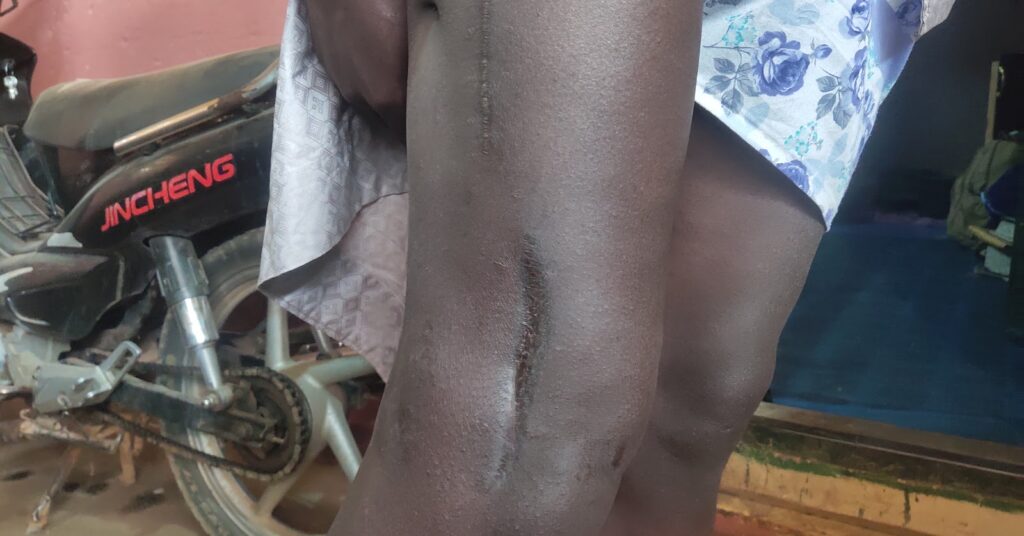
Getting to Nigeria, he was told that to have his problem totally solved, he would need ₦1.5 million for another surgery. “I now walk with difficulty because of the damage which led to my stiff leg,” he said, limping heavily as he moved back to his room.
Rescued by a policeman
Many of the wounds inflicted on the IMN members remain fresh. Countless individuals have been permanently scarred and Jibrin Tukur is one of them. He lives close to the scene of the violence, so he witnessed the shooting from the start.
Jibrin told HumAngle he saw the soldiers shoot his friend dead and, as he attempted to rescue him, he was shot too. “I left my friend and had to focus on myself because my leg was twisting 360 degrees. I crawled to a nearby room and hid there but the soldiers later saw me.”
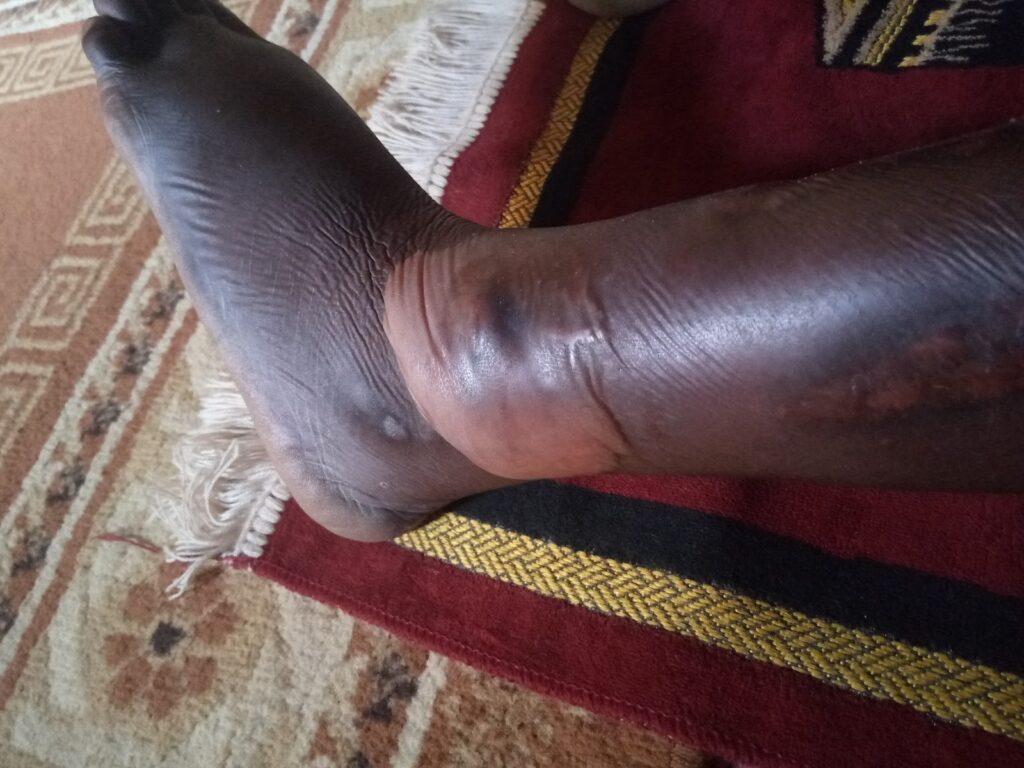
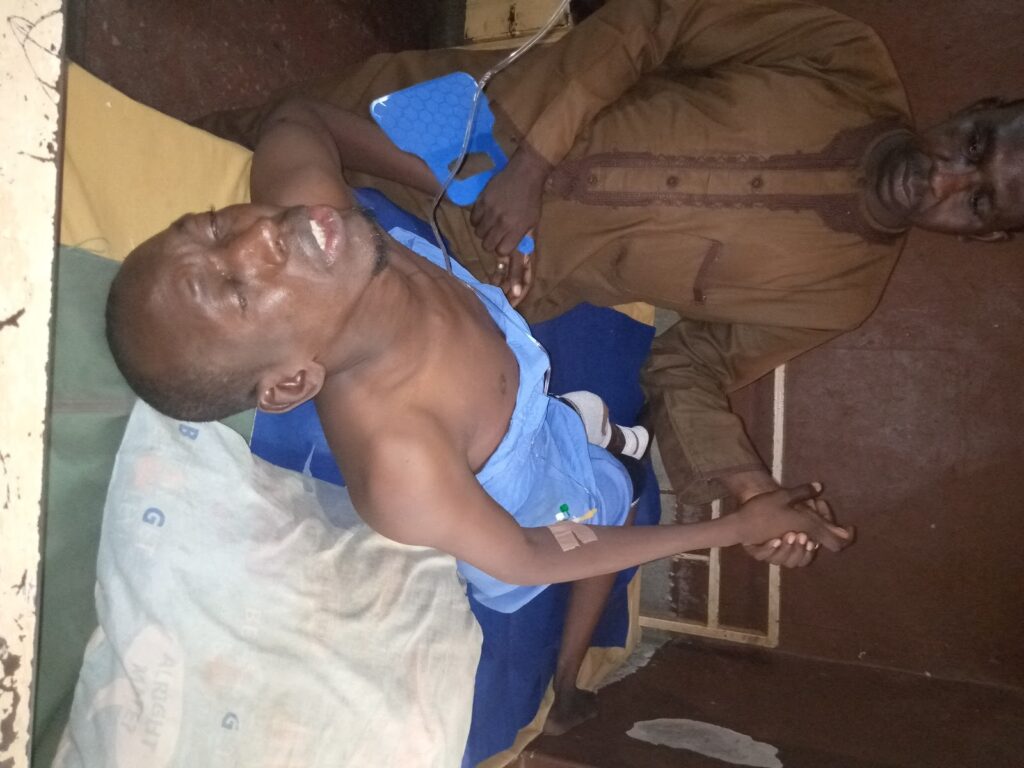
Though he pretended to be dead, a soldier saw his eyes moving and hit him with a gun butt. He later woke up in the mortuary on Sunday after he was packed with deceased casualties.
“As I struggled to speak, a police officer who lived close to my house saw me among the dead individuals and offered to help me. At that point, some soldiers discouraged him that I could not survive but the doctors intervened,” he recalled.
Jibrin spent a week at ABUTH before he was later transferred to Al-Mariam Hospital in Kano, where he spent over 10 months. Like many IMN members who sustained gunshot injuries, he was also flown to Iran in 2017. He returned to Nigeria after two months but still feels pains in his leg.
His case was similar to that of Abdulrauf Hudu, another gunshot survivor. Abdulrauf was shot in a room where he was hiding alongside five other friends. He was the only lucky person among them even after the soldiers set where they were ablaze.
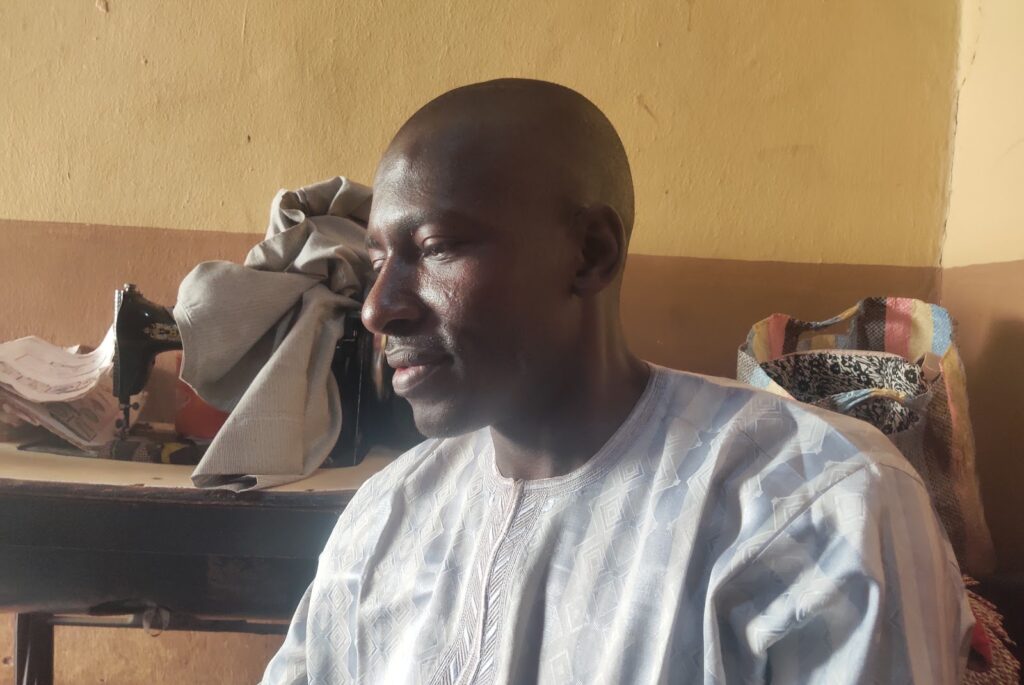
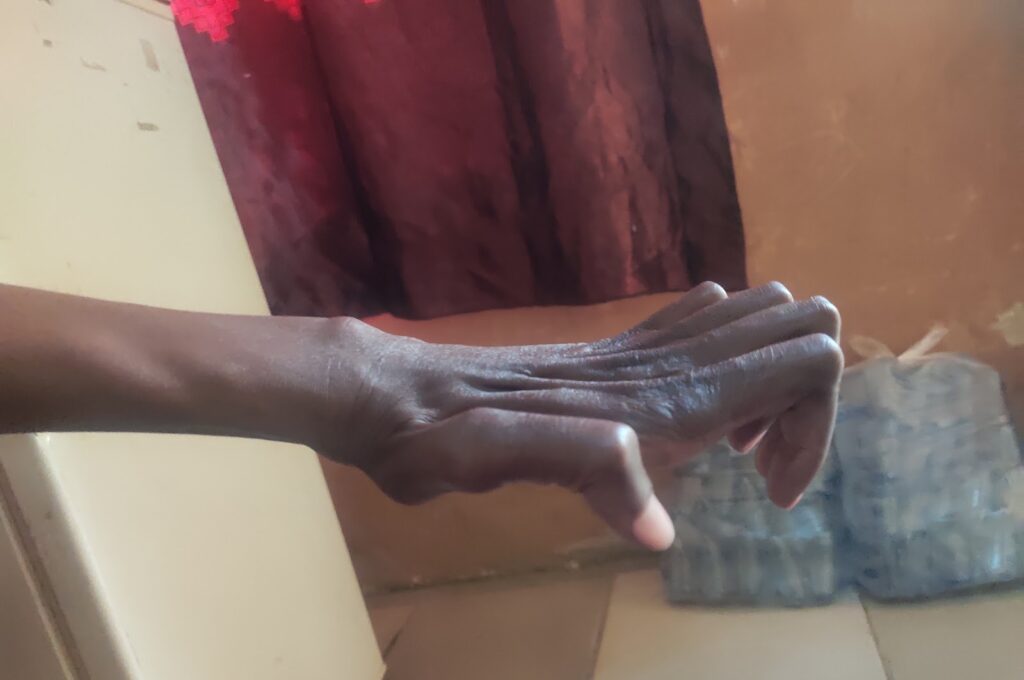
“I was with the dead people battling for survival until Tuesday, Dec. 15. I was only discovered when security operatives were packing dead bodies to the mortuary. The soldiers were surprised that I didn’t die,” Abdulrauf said.
“There was no place to stay at the teaching hospital, so I was taken home and attended to by IMN’s medical team for three months. Though I am now well, I still feel the pain once in a while.”
HumAngle contacted the spokesperson of the Nigerian Army, Onyema Nwachukwu, for comments on the 2015 extrajudicial killings and assaults on IMN members but he did not respond to repeated calls and text messages. He also did not respond to enquiries on efforts in place to prevent recurrences.
Burnt alive
Ahmad Musa, 52, had worked as a driver with MTN in Kano for six years before the Zaria massacre. He left Kano on Friday, Dec. 11, 2015, for his usual weekend visit to his family in Zaria when he was caught up in the incident.

Ahmad, who also lives close to the residence of El-Zakzaky, said he heard gunshots around 1 a.m. on Sunday and rushed there to help. “It was on getting there that I saw many casualties. I was with the members of the Islamic Medical Care Initiative of the movement rescuing people till day break.”
“My brother’s son, Alli, was shot in the neck and I had to hold the drip for him because there was no drip stand. Unfortunately, he gave up and I had to leave him for a five-year-old cousin who was shot too,” he said, expressing disappointment.
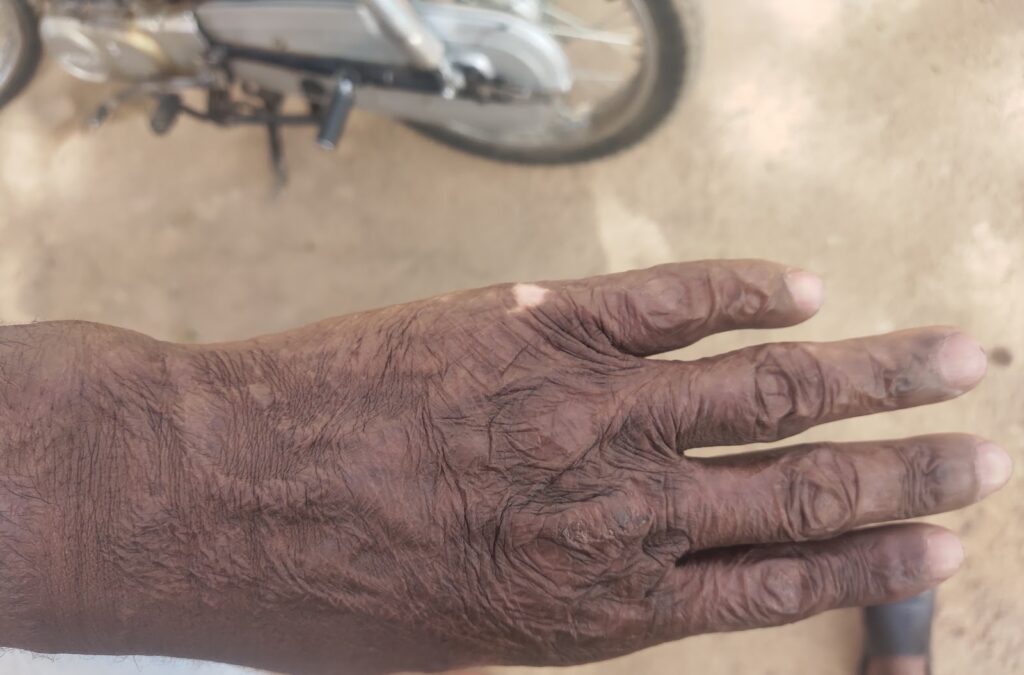
As Ahmad attempted to take Alli’s corpse, some soldiers arrived. He pretended as if he had died but, in a bid to be doubly sure, they poured petrol on the victims in the residence and set them ablaze.
“I’d even given up, thinking I was not going to survive, but God is wonderful. I cannot explain how I escaped after they left. I later met a pastor who told me to enter the water tank in his house to reduce my agony. I did for a few minutes.”
As soon as he stepped out of the pastor’s house, he was spotted by soldiers, who arrested him. And so began his journey to prison.
Support Our Journalism
There are millions of ordinary people affected by conflict in Africa whose stories are missing in the mainstream media. HumAngle is determined to tell those challenging and under-reported stories, hoping that the people impacted by these conflicts will find the safety and security they deserve.
To ensure that we continue to provide public service coverage, we have a small favour to ask you. We want you to be part of our journalistic endeavour by contributing a token to us.
Your donation will further promote a robust, free, and independent media.
Donate HereStay Closer To The Stories That Matter

